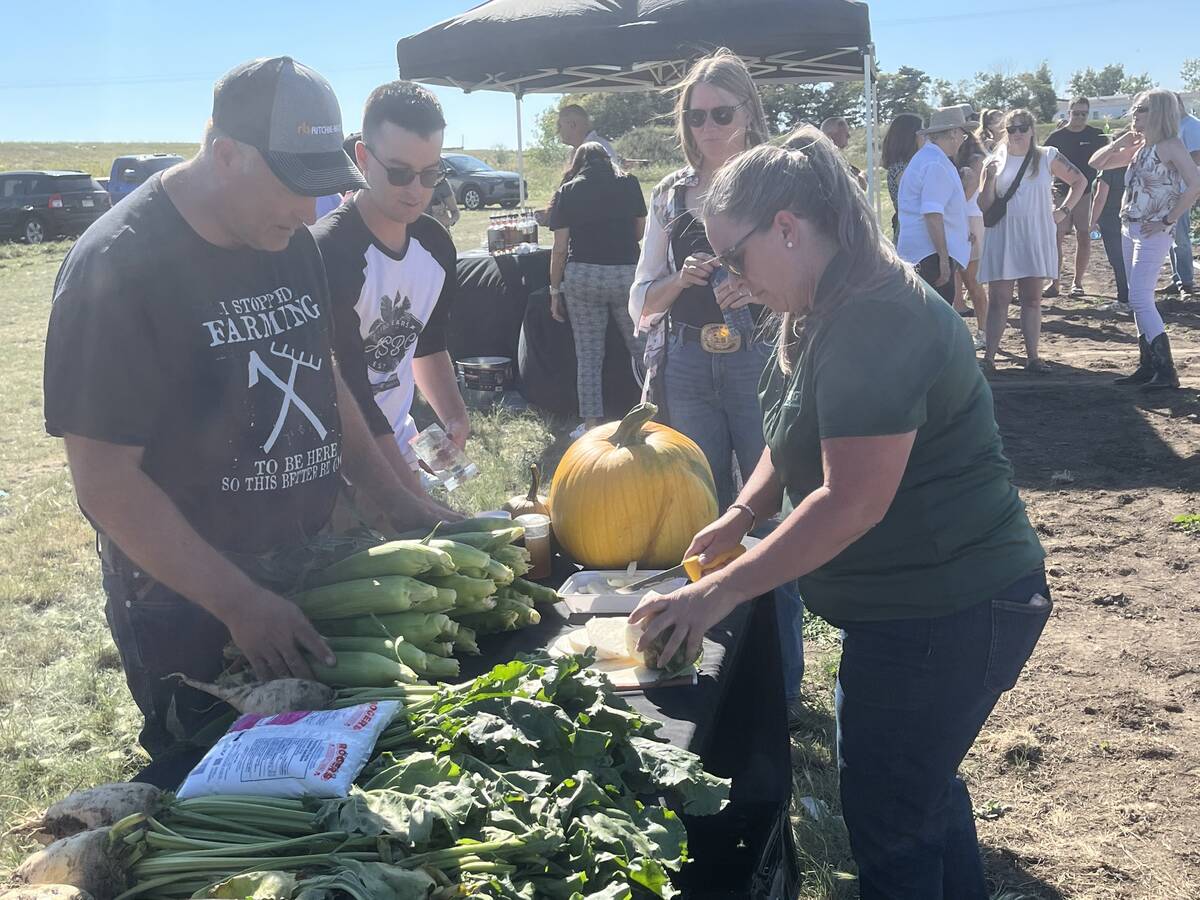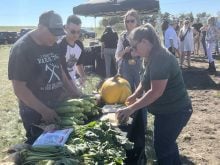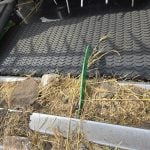Seven new crop research projects have been approved and will be funded in 2002 by the Western Grains Research Foundation. The projects, which run one to three years, support a range of crop research in Western Canada.
The research foundation’s endowment fund began in 1983 when the federal government turned over $9 million in producer money from the discontinued Prairie Farm Assistance Act, a forerunner of today’s crop insurance program. Annual interest from the nest egg funds the research projects.
Annual interest was originally close to $1 million a year, but lower interest rates have cut that by half. Lorence Peterson, the foundation’s executive director, said this has reduced the amount of research that can be funded.
Read Also

Alberta farm lives up to corn capital reputation
Farm to Table Tour highlighting to consumers where their food comes from features Molnar Farms which grows a large variety of market fruits and vegetables including corn, with Taber being known as the Corn Capital of Canada.
It was recently announced that the foundation will receive excess revenue from grain movement under the Canadian Transportation Agency rate cap. The foundation will know by the beginning of the new year if there will be a payment for the 2000-01 crop year.
Approved research projects include:
- Assembling the best chickpea canopy strategy for different production zones – University of Saskatchewan, Saskatoon, Rosland Ball.
Chickpeas have two leaf types, a unifoliate with a common-looking leaf and the other with a fern-like leaf. Ball will look at the density of seeding rates and how the density of the plants with the different leaf type affects plant growth, disease and yield. The researcher will also look at how each chickpea type grows in various areas of the Prairies.
She hopes to find the best chickpea for each region.
“They want to understand how the different plants contribute to yield,” Peterson said.
- Improved control of Mycosph-aerrella blight in field peas- Agriculture Canada, Morden, Man., Robert Conner.
Mycosphaerrella blight is the most serious field pea disease facing producers. In Manitoba, the disease is found in all pea crops. No pea variety has more than a moderate resistance to the disease. Conner will look at everything from cultural control measures to the best timing of fungicide application to help control the disease. It’s hoped this research will lead to future breeding programs.
- Medics in prairie grain-cropping systems – University of Manitoba, Winnipeg, Martin Entz.
This study looks at medic, a low-growing legume, underseeded in cereal crops to see if it will fix nitrogen and lead to higher protein in the companion wheat crop.
“They want to look to see if it could reduce the need for fertilizer,” Peterson said.
The study will also try to determine if the legume aids in higher wheat protein, faster crop residue decomposition, suppression of post harvest weed and volunteer crop growth, and fusarium suppression. It will also explore whether medic offers late season grazing, controls soil salinity and prevents excess water problems.
- Developing canola with enhanced deterrence to flea beetle feeding – Agriculture Canada, Saskatoon, Margaret Gruber.
Gruber is looking at canola plant material with tiny hairs on the leaves and stems. Flea beetles don’t like and won’t feed on hairy canola. The researcher hopes to develop plant material that is resistant to flea beetles. The study will include anthocyanin-regulating genes. This compound will deter flea beetle feeding when found in leaves.
- DNA mapping of durum end-use quality traits – Agriculture Canada, Swift Current, Sask., Ronald Knox.
This study aims to develop methods that plant breeders can use to quickly produce new varieties with specific qualities. It will provide information on the nature and function of genes involved in end-use quality and provide tools such as DNA markers to assist breeding programs.
The markers will help speed the process. If researchers can identify a marker associated with a quality, there is no need to grow out the plant to see the quality.
- Improving the efficiency of multi-factor and multi-location agronomic experiments – Agriculture Canada, Indian Head, Sask., Guy Lafond.
This project looks at the design of research plots to see if smaller plots and fewer replications can provide reliable research results.
Multi-factor research is limited by the cost of labour and land for research plots. New designs with smaller plots and fewer replications would reduce cost.
- Developing a quicker test to measure beta-glucan levels in cereal species – Agriculture Canada, Winnipeg, Christof Rampitsch.
There is a growing consumer awareness of food’s nutritional content. High beta-glucan is desirable in food cereals because it has been shown to reduce heart disease in humans. On the other hand, beta-glucan in malting barley interferes with the brewing process. There is need for a rapid, inexpensive and reliable test for beta-glucan levels to replace the expensive and cumbersome tests now in use.














